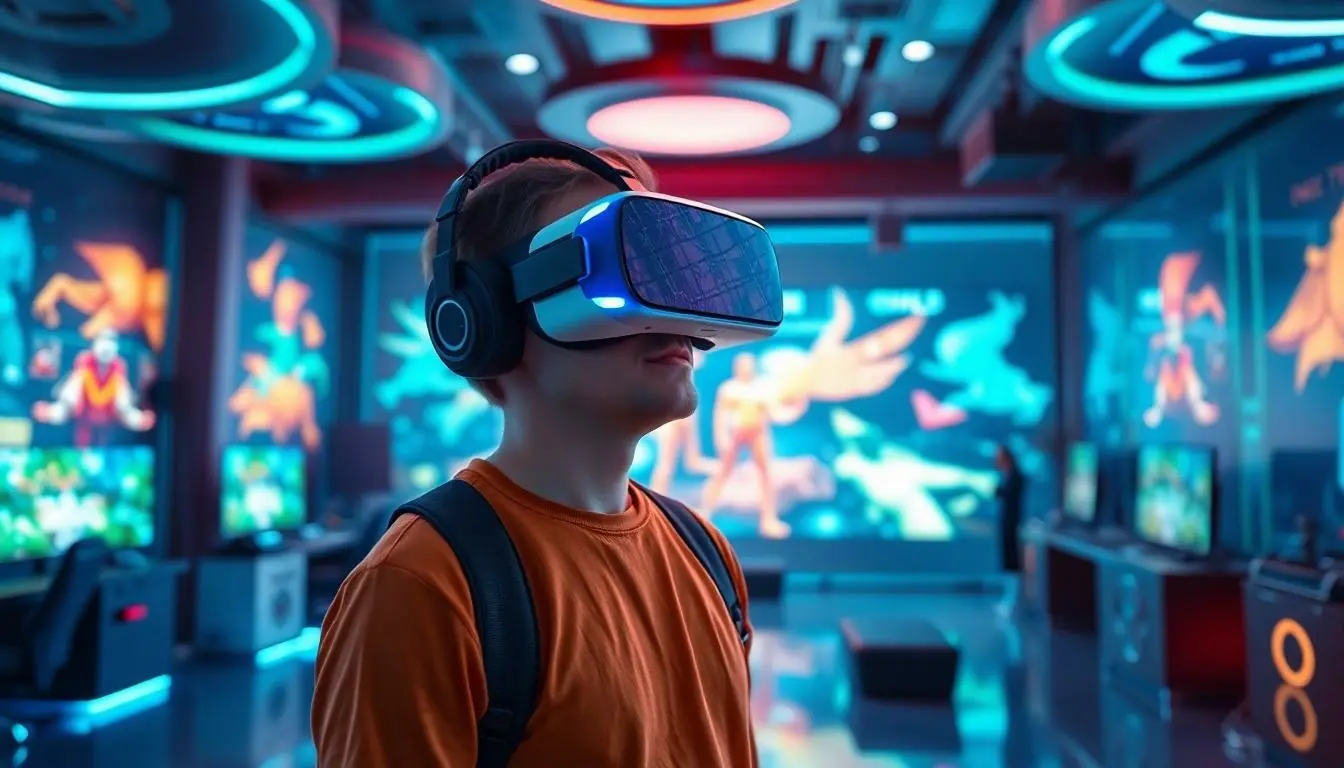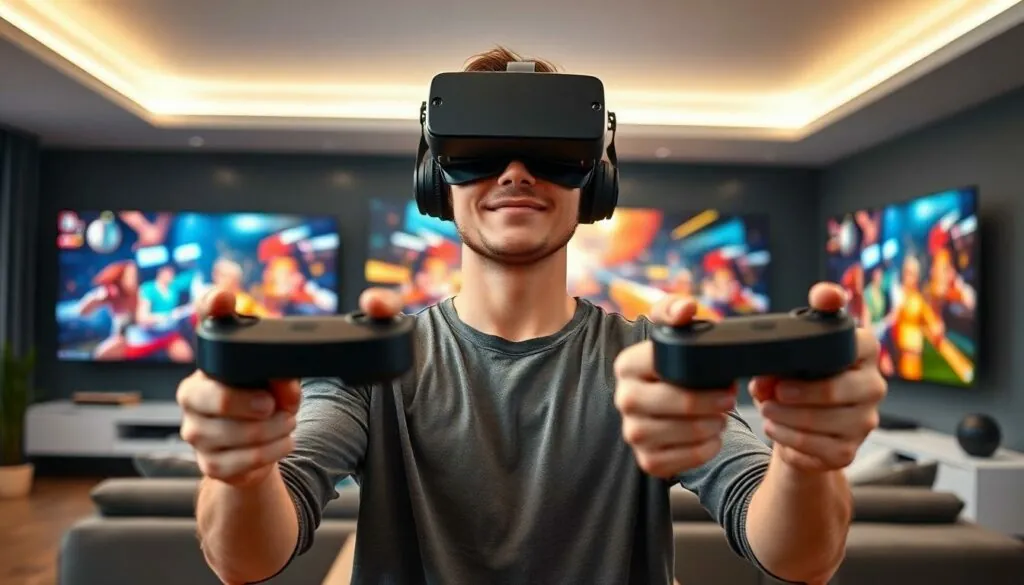Table of Contents
ToggleIn a world where binge-watching is a competitive sport and gaming marathons are considered cardio, the latest innovations in entertainment tech are shaking things up like a toddler with a juice box. From jaw-dropping virtual reality experiences that transport users to fantastical realms, to streaming platforms that seem to know exactly what you want to watch (even if it’s that guilty pleasure you won’t admit to), the entertainment landscape is evolving faster than you can say “what’s next?”
These advancements aren’t just about flashy gadgets or cool features; they’re redefining how people connect and experience stories. So grab your popcorn and settle in, because this journey through the cutting-edge world of entertainment tech is about to get exciting. Prepare to discover what’s hot, what’s not, and what might just make you the coolest kid on the block—at least until the next big thing comes along.
Latest Innovations in Entertainment Tech
Emerging technologies reshape the entertainment landscape. Virtual reality systems engage users by immersing them in interactive worlds. Companies have developed advanced VR headsets like Meta Quest 3, which offer improved graphics and reduced latency, enhancing real-time experiences.
Streaming platforms utilize algorithms to provide personalized content. Netflix and Spotify leverage machine learning to analyze user behavior, curating recommendations that cater to individual tastes. This personalization boosts viewer retention and enriches user satisfaction.
Artificial intelligence contributes significantly to content creation. Writers use AI tools to brainstorm ideas, enabling them to craft scripts more efficiently. Studios incorporate AI-generated visuals to streamline production timelines.
Augmented reality experiences blend digital and physical worlds. Games like Pokémon GO exemplify this innovation by encouraging players to explore real environments while capturing virtual creatures. User engagement increases due to the interactive nature of AR.
Smart home devices enhance the viewing experience. Integration of voice-activated assistants like Amazon Alexa or Google Assistant allows users to control entertainment systems hands-free. This convenience streamlines activity and attracts tech-savvy audiences.
Blockchain technology gains traction in the entertainment industry. Platforms use it to secure intellectual property rights and streamline transactions between creators and consumers. This transparency empowers artists, ensuring they receive fair compensation for their work.
Diverse storytelling methods evolve, utilizing multimedia formats. Podcasts have surged in popularity, offering listeners unique narratives delivered through various genres. Audiobook services expand their catalog, reaching broader demographics.
These innovative advancements continue to define the future of entertainment tech, paving the way for new experiences and redefining audience engagement.
Virtual Reality Advancements

Virtual reality technology is progressing rapidly, bringing significant changes to entertainment. Innovations in this field enhance user interaction and transform the overall experience.
Immersive Gaming Experiences
Innovative gaming systems like the Meta Quest 3 redefine user engagement. Enhanced graphics create lifelike environments where players fully immerse themselves in gameplay. Developers now design VR games that utilize haptic feedback, allowing players to feel in-game actions. This sensor integration provides a more realistic experience. Multiplayer platforms also benefit, enabling friends to explore virtual worlds together, regardless of their physical location. As a result, virtual reality gaming captures broader audiences, merging physical and digital interactions.
VR in Film and Television
Filmmakers utilize virtual reality to create groundbreaking storytelling formats. VR experiences allow viewers to become part of narratives, exploring different perspectives within a film. Productions develop interactive storytelling techniques, encouraging audience engagement like never before. As this technology evolves, filmmakers improve visuals and seamless storytelling transitions. Virtual reality applications in television bring dynamic content, allowing users to navigate stories independently. Ultimately, this innovation reshapes traditional viewing methods, inviting audiences into immersive cinematic experiences.
Augmented Reality Applications
Augmented reality (AR) transforms how users interact with entertainment. This technology enhances real-world experiences by overlaying digital elements, creating new engagement opportunities.
AR in Live Events
AR enriches live events, creating memorable experiences. Concerts and sports events utilize AR apps to deliver interactive features like real-time statistics and visual effects, enhancing audience immersion. Fans can engage with their favorite performers through AR filters and 3D animations. Events such as the NBA All-Star Game have adopted AR to present captivating visual displays, drawing attendees deeper into the action. Each application pushes boundaries, making live experiences more interactive and dynamic.
Enhancing Consumer Engagement
Brands leverage AR to boost consumer participation significantly. Retail and entertainment industries utilize AR campaigns to create immersive experiences for users. For example, companies like IKEA provide AR apps that allow customers to visualize furniture in their homes before purchasing. This technology increases satisfaction and confidence in buying decisions. Furthermore, immersive storytelling through AR apps invites users to explore narratives interactively, keeping them absorbed and engaged. Enhanced engagement strategies contribute to increased loyalty and brand awareness in an increasingly competitive landscape.
Streaming Technology Breakthroughs
Streaming technology continues to advance, enhancing how audiences consume content. Innovations in this area focus on improving accessibility and flexibility.
New Content Delivery Methods
Cloud-based services redefine content delivery, allowing seamless streaming across devices. Viewers can access shows and movies anytime, anywhere via platforms like YouTube and Amazon Prime Video. Peer-to-peer technology optimizes bandwidth and enhances streaming quality, ensuring reliable playback even during peak hours. Enhanced data compression formats, such as AV1, support high-definition content without significantly increasing file sizes. Globally, adaptive bitrate streaming adjusts video quality based on network conditions, providing users a smooth viewing experience. Streaming services frequently explore hybrid models, combining subscription-based access with ad-supported tiers to attract diverse audiences and maximize reach.
Improved User Experience
Personalization algorithms elevate user experience on platforms, analyzing viewing habits to recommend tailored content. Subscribers receive suggestions aligned closely with their preferences, minimizing search time. User interfaces, designed for simplicity, emphasize intuitive navigation, making content discovery effortless. Enhanced social sharing options facilitate interaction among viewers, allowing friends to share recommendations and favorite moments easily. Integration of voice search enables hands-free navigation, further streamlining access to desired content. Real-time analytics empower platforms to refine their offerings, responding promptly to audience preferences and trends. Gamification elements, such as rewards for engagement, boost retention and encourage continued exploration of available content.
Artificial Intelligence in Entertainment
Artificial intelligence significantly transforms the entertainment industry. Innovations in AI technology enhance content creation and user experiences.
AI-Driven Content Creation
AI tools streamline content creation for writers and producers. Technologies like natural language processing assist in generating scripts and storylines, allowing creators to explore new narrative possibilities. Some platforms utilize AI algorithms to analyze audience preferences, inspiring writers with relevant themes. Budget constraints often limit production resources. Predictive analytics help studios optimize decision-making by forecasting audience engagement levels. AI-driven solutions can reduce the time required for post-production tasks, enabling faster project delivery.
Personalized Recommendations
Machine learning algorithms play a crucial role in delivering tailored content recommendations. Netflix and Spotify analyze user behaviors to suggest programs and music that align with individual tastes. Robust data analysis facilitates more accurate predictions, enhancing viewer satisfaction. Users experience a more immersive journey through suspenseful discoveries of new shows or songs. Enhanced recommendation systems increase engagement significantly, contributing to platforms’ overall success. With each interaction, AI refines its understanding of user preferences, making suggestions increasingly relevant.
The landscape of entertainment technology is evolving at an unprecedented pace. Innovations like virtual reality and augmented reality are not just enhancing experiences but are redefining how audiences interact with stories. As streaming platforms harness the power of AI for personalized content, viewers can expect a more tailored approach to their entertainment choices.
With advancements in cloud services and smart home integrations, the future promises even greater accessibility and engagement. These technologies are shaping a new era where creativity meets cutting-edge tools, ensuring that the entertainment experience continues to be immersive and captivating. As these trends develop, they’ll undoubtedly lead to exciting opportunities for both creators and consumers alike.







